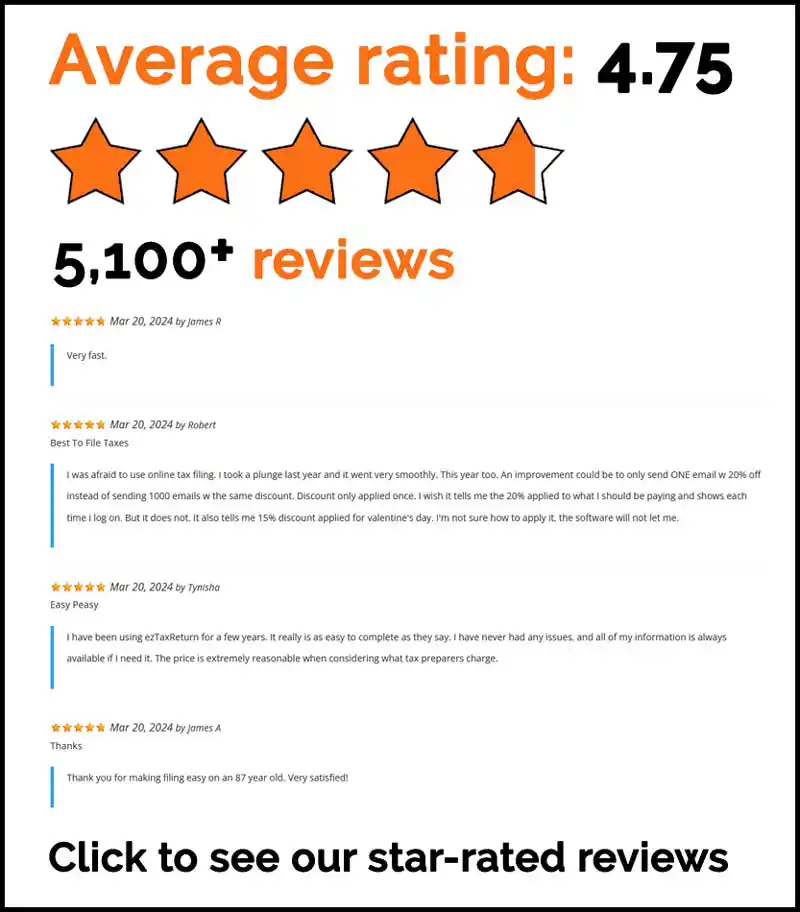The information in this article is up to date for tax year 2024 (returns filed in 2025).
Looking to claim mileage on taxes and save money? This guide shows how to accurately deduct miles for business, medical, or charitable purposes. Learn which method to use and how to keep proper records for maximum tax savings when claiming mileage on taxes.
Key Takeaways
- Mileage deductions can significantly lower your taxable income, especially for self-employed individuals and rideshare drivers.
- Choose between the standard mileage rate or actual expenses method to maximize your deductions, depending on your vehicle usage.
- Accurate recordkeeping is crucial for claiming mileage deductions, and using tracking apps can simplify the process.
What Are Mileage Tax Deductions?
Mileage tax deductions are a valuable tool for reducing your taxable income and maximizing tax savings. These deductions significantly benefit individuals using their vehicles for business, medical, and charitable purposes by lowering overall taxable income. Mileage deductions often represent the most significant tax benefit for rideshare drivers and other self-employed individuals.
Deducting miles driven for these purposes reduces taxable income and, consequently, your tax liability. Accurately understanding and claiming these deductions can lead to substantial tax savings.
Choosing Between Standard Mileage and Actual Expenses Method
When it comes to claiming mileage deductions, you have two main methods to choose from: the standard mileage rate method and the actual expenses method. Each method has its own advantages and drawbacks, and the best choice depends on your specific situation.
Calculating potential tax deduction using both methods helps determine which one offers the larger tax benefit.
Standard Mileage Rate Method
The standard mileage rate method is straightforward: you multiply the total miles driven by the IRS mileage rate for the year. The 2024 IRS mileage rate is:
- Business: 67 cents per mile
- Medical: 21 cents per mile
- Charity: 14 cents per mile
This rate applies for the entire year. This rate is designed to cover all vehicle-related costs, including fuel, maintenance, and insurance.
To use the standard mileage rate, you must own or lease the vehicle and choose this method in the first year the vehicle is used for business. One potential drawback is that if you don’t drive frequently for business, this method may yield lower deductions compared to the actual expenses method.
Using the standard mileage rate method means you cannot separately claim other vehicle-related expenses such as fuel or maintenance. While this method simplifies recordkeeping, it might not always provide the highest deduction.
Actual Expenses Method
The actual expenses method allows you to deduct the actual costs of operating your vehicle for business purposes. Expenses encompass items such as gasoline, insurance, lease payments, car expenses, and depreciation. Additionally, it includes parking fees and tolls. To calculate your deduction, you sum all these expenses and then multiply by the percentage of miles driven for business.
While this method can potentially offer larger deductions, it requires meticulous recordkeeping. You need to keep detailed records of all vehicle-related expenses to support your deductions. This method can be more advantageous if your actual vehicle expenses are high relative to the standard mileage rate.
Eligibility for Mileage Deductions
Knowing who is eligible for mileage deductions is crucial. Mileage deductions fall into three main categories: business-related trips, medical journeys, and charitable drives. Self-employed individuals can claim deductions for all business-related driving, including trips from their principal place of business to other work locations.
However, employees cannot claim unreimbursed vehicle expenses post-2018. Only trips to temporary workplaces are deductible; commuting to a regular job is not.
Active-duty military personnel can currently claim mileage deductions for moving expenses, while volunteering mileage is generally not deductible under current tax laws.
Detailed Steps to Claim Mileage on Taxes
Claiming mileage deductions requires following a specific process to ensure accuracy and compliance. The key steps include selecting your calculation method, keeping accurate mileage records, calculating your deduction, and reporting it on the appropriate tax forms.
Step 1: Select Your Calculation Method
First, decide whether to use the standard mileage rate method or the actual expenses method. The standard mileage rate method involves deduct mileage at a predetermined rate per mile driven for business, whereas the actual expenses method lets you deduct the actual costs of operating the vehicle, including fuel, repairs, and insurance.
Choosing the standard mileage deduction means applying it in the first year the vehicle is used for business. This decision can impact future deductions, so compare both methods to choose the one that maximizes tax savings.
Step 2: Keep Accurate Mileage Records
Accurate records are essential for successfully claiming mileage on your taxes. Detailed mileage logs make it easier to categorize expenses and calculate your deductions.
A mileage log should include the date, start and end locations, purpose of the trip, and odometer readings. A mileage tracking app can automatically track mileage and produce a log for audits. Scanning digital copies of your records adds security and saves space.
Keep your mileage log updated throughout the year to maintain accuracy. Retain these records for at least three years from filing or two years from payment. Real-time logging is necessary as the IRS may not accept retrospective documentation.
Step 3: Calculate Your Deduction
Calculating your mileage deduction depends on the chosen method. If using the standard mileage rate, multiply the total business miles driven by the IRS mileage rate. For the actual expenses method, sum all vehicle-related expenses and multiply by the percentage of miles driven for business to deduct business mileage.
Only miles driven for work-related purposes can be deducted. If a vehicle is dedicated solely to work use, 100% of the mileage can be deducted.
Step 4: Report on Tax Forms
Reporting mileage deductions on tax forms varies depending on employment status. Self-employed individuals use Schedule C to report business income and expenses.
Medical and charitable mileage must be detailed on Schedule A, where individuals can itemize these deductions. Let ezTaxReturn handle the forms and math for you – get started today!
Special Considerations for Different Types of Mileage
Different types of mileage have specific eligibility criteria and documentation requirements. Business, medical, and charitable mileage have unique considerations affecting how deductions are calculated.
Business Mileage
Business mileage refers to the miles driven for work-related tasks. This can include trips to meet clients, attend business meetings, or travel between job sites. However, commuting to and from a regular workplace is not eligible for deductions.
Self-employed individuals report business mileage on Schedule C, while qualified employees use Form 2106. A mileage log is crucial for accurate reporting and maximizing deductions.
Medical Mileage
Medical mileage is deductible if travel is for receiving medical care. Documentation proving the purpose of travel is necessary for claiming these deductions. The standard mileage rate for medical purposes is 21 cents per mile.
Medical expenses must exceed 7.5% of adjusted gross income to qualify for deductions. Many people may opt not to claim these deductions because they receive a greater benefit from the standard deduction.
Charitable Mileage
The standard mileage rate for charitable purposes is 14 cents per mile. To qualify, you must volunteer for a recognized charitable organization, and the travel must be directly related to your volunteer work.
Keep meticulous records of your trips, including the date, purpose, and miles driven. Ensure the organization is eligible under IRS rules, as only qualified charitable organizations’ mileage can be deducted. Remember, the deduction is only available if you itemize your deductions on Schedule A of your tax return.
Recordkeeping Best Practices
Proper records are essential to support mileage claims. Insufficient documentation can lead to the IRS denying deductions. Automated mileage tracking apps like MileIQ, TripLog, and Everlance reduce the burden of manual recordkeeping.
Paper logs, while simple, are prone to errors and can be easily lost or damaged. Digital methods, such as spreadsheets or professional tax services, help organize mileage data and ensure accuracy.
Common Mistakes to Avoid When Claiming Mileage
A frequent error is mixing personal and business mileage in calculations. Claiming personal or commuting miles as business mileage can disqualify deductions. Using outdated mileage rates instead of the current year’s rate is another common mistake.
Claiming deductions for regular commuting trips, which are not eligible, is another misstep. Staying informed about specific rules surrounding mileage deductions helps avoid errors and maximize tax savings.
Use ezTaxReturn to Claim Your Mileage Deduction
ezTaxReturn’s tax preparation software helps maximize potential write-offs and file your taxes with ease. The software is designed to help users claim the maximum tax refund available through various credits and deductions. File now!
Summary
In summary, claiming mileage deductions can significantly reduce your taxable income and maximize your tax savings. By choosing the right calculation method, keeping accurate records, and correctly reporting on tax forms, you can take full advantage of these deductions. Whether you use the standard mileage rate or the actual expenses method, the key is to maintain meticulous records and stay informed about eligibility criteria.
We hope this guide has provided you with valuable insights into maximizing your tax savings through mileage deductions. Remember, every mile counts when it comes to reducing your tax bill, so start your tax filing today!
Frequently Asked Questions
What is the IRS mileage rate for 2024?
The IRS mileage rate for 2024 is set at 67 cents per mile for business use, 21 cents per mile for medical purposes, and 14 cents per mile for charity-related driving. So, if you’re planning to drive for these purposes, keep these rates in mind!
Can employees claim unreimbursed vehicle expenses?
Employees can’t claim unreimbursed vehicle expenses since the tax law changes in 2018. So, unless you’re a business owner, those expenses won’t be deductible.
What types of mileage can be deducted?
You can deduct mileage for business trips, medical appointments, and charitable activities. Just keep good records to maximize your deductions!
What records should I keep to claim mileage deductions?
To claim mileage deductions, you should keep a detailed mileage log that includes dates, destinations, reasons for travel, and odometer readings. Using digital tools or apps can make this process easier and more accurate.
How do I report mileage deductions on my tax return?
To report mileage deductions on your tax return, self-employed individuals should use Schedule C, while for medical and charitable mileage, you’ll need to report it on Schedule A. This ensures you track your deductible expenses accurately!
Ready to file your taxes and claim your mileage deductions? Get started today with ezTaxReturn for a fast, easy, and accurate filing experience!
The articles and content published on this blog are provided for informational purposes only. The information presented is not intended to be, and should not be taken as, legal, financial, or professional advice. Readers are advised to seek appropriate professional guidance and conduct their own due diligence before making any decisions based on the information provided.




